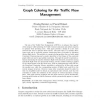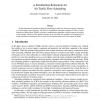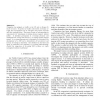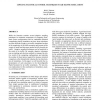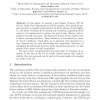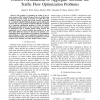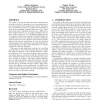ANOR
2004
14 years 3 months ago
2004
The aim of Air Traffic Flow Management (ATFM) is to enhance the capacity of the airspace while satisfying Air Traffic Control constraints and airlines requests to optimize their o...
CORR
2006
Springer
14 years 3 months ago
2006
Springer
We first formulate the problem of optimally scheduling air traffic low with sector capacity constraints as a mixed integer linear program. We then use semidefinite relaxation tech...
ATMOS
2009
14 years 4 months ago
2009
We address a problem in air traffic management: scheduling flights in order to minimize the maximum number of aircraft that simultaneously lie within a single air traffic control ...
WSC
1998
14 years 4 months ago
1998
The Detailed Policy Assessment Tool (DPAT) is a widely used simulation of air traffic control that incorporates advanced technology for user-friendly operation. DPAT computes cong...
ECIS
2000
14 years 4 months ago
2000
Congestion has plagued air traffic in the US and in Europe for nearly 20 years. To protect air traffic control from overloads, air traffic flow management tries to anticipate and ...
WSC
2004
14 years 4 months ago
2004
Air traffic flow management (TFM) is a set of processes and procedures which seek to balance the demand for airspace resources with the capacity of these resources. Examples of re...
WSC
2004
14 years 4 months ago
2004
While the literature contains several adaptive sampling techniques for statistical comparison of competing simulated system configurations and for embedded statistical computation...
IPCO
2008
14 years 4 months ago
2008
In this paper, we present a new Integer Program (IP) for the Air Traffic Flow Management (ATFM) problem. The model we propose provides a complete representation of all the phases o...
CDC
2008
IEEE
14 years 5 months ago
2008
IEEE
The problem of regulating air traffic in the en route airspace of the National Airspace System is studied using an Eulerian network model to describe air traffic flow. The evolutio...
ATAL
2008
Springer
14 years 5 months ago
2008
Springer
The ability to provide flexible, automated management of air traffic is critical to meeting the ever increasing needs of the next generation air transportation systems. This probl...
